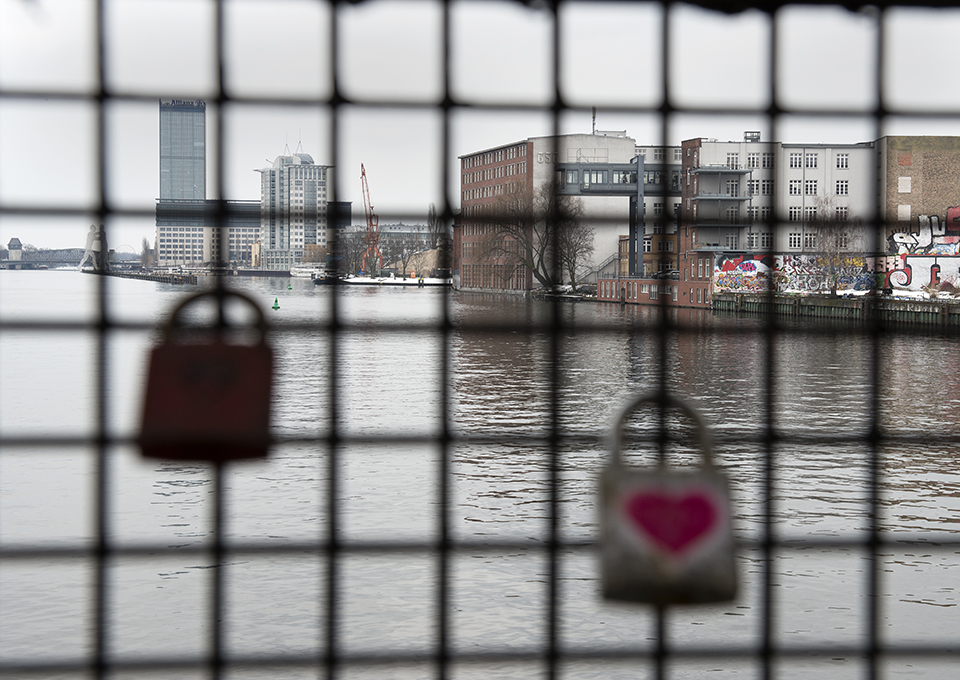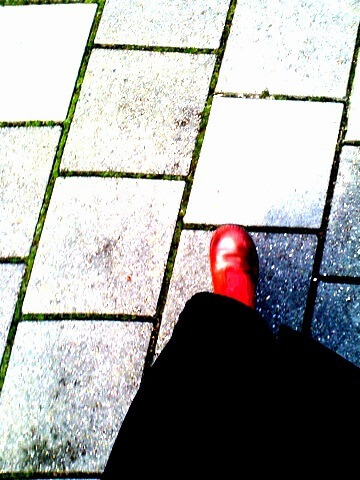Karl is 90 years old & Liesl 92. Born in the Weimar Republic. Then history labeled them Ossi’s. Now they are inhabitants of Berlin, capital of a reunified Germany. They have never moved in their lives. Why would they? If you keep still, the world comes to your doorstep anyway. We walked through their history.
On our way, we stop at bookshop Bücherbogen. Around 1900 Berlin was developing rapidly. The city was booming and expanded fast. The city council argued over the new, to be constructed metro. Underground or rather above ground? Above ground won initially and that’s why, a century later, you can leaf through books while the trains hurtle over your head.
De Paris Bar no longer exists, as it turns out. A hip Austrian restaurant has taken over. The food is excellent, something that according to critics, was never the case at the Paris Bar. Now schnitzels, the size of a car wheel cover the plates.
But we had hoped to spot a German ‘prommi’, a VIP at the Paris Bar. Karl once ended up next to Joska Fischer, former Minister of Foreign Affairs. “Had a woman with him, twenty years younger”, he remembers, directing a contemplative look at Liesl. “Wouldn’t allow him nothing. No wine, no pasta. You might as well give up on life.”
Yuppy area
Prenzlauer Berg. Once a district, where Karl and Liesl lived under devastating circumstances in tenement blocks. Whoever couldn’t afford a flat, rented a bed, or offered to live ‘wet’, in concrete blocks still having to dry.
Those same blocks are now in demand, in what became an East Berlin yuppy area full of restaurants and organic food stores. Rents have gone up enormously since. Liesl hopes to succumb before another rent increase becomes a fact. “And if not the rent increase will cause my death surely enough,” she states matter-of-factly.
We first stroll over the Kurfürstendamm, the famous 53 meters wide shopping boulevard, inspired on the layout of the Champs-Elysee. To Karl this was long the most beautiful street of Berlin. Maybe, because he wasn’t allowed to come here for almost 30 years. Possibly the Romanian accordionist is also inspired by the French boulevard because when we get into the metro it is Oh Champs Elysee he insists on playing.
Our destination is metro station Nollendorfplatz. On a wall a plaque commemorates the homosexual victims of the Nazi regime. One of the small markets, Winterfeld Platz is just on the opposite site of the street.
Turkish sheep, cheese, earwarmers of organic cotton and gloves made out of bicycle tires. One stand sells huge knifes from Solingen. “This”, says the merchant, while doing some frightful waving with a cleaver , “they use in the Netherlands to cut a loaf of bread. In Poland, it is used to decapitate carp.” Right!
Between 1961 and 1989, a trip eastward bound to Karl and Liesl’s Berlin was an infernal adventure. You had to request visa, exchange money. That money had to be spent to the last cent in a part of town where there was nothing to buy. Now we whiz in 10 minutes from west to east.
While rain pours on the umbrella we enter Volkspark Friedrichshain, a public park. Karl never learned to swim but all his life, he went paddling in the fairy fountain of this park used by laborers. The stone characters from the tales of the Grimm brothers are already in hibernation. Wrapped in wooden cases against the freezing winter cold.
Dicker Hermann
In Prenzlauer Berg stands a water tower. It has been nicknamed Dicker Hermann after Hitler’s obese commander of Aviation. But it had no nickname when Liesl’s mother, shortly after World War I, was standing in line for the soup kitchen to keep her family alive. The nickname originates from the time when the tower was no longer associated with mercy but with fear and death, after it had been used as a torture chamber.
To beat the cold, we enter the Russian restaurant Pasternak across the street. In a room, resembling a livingroom in Moscow in the 1920’s, we eat pink beet soup on a red checkered tablecloth.
“Are you guys warm yet?” asks jazz musician Magnus Lindgren that night in Charlottenburg. For over an hour we have been standing in the rain outside Jazzcafé A-Trane to buy tickets. Soon steamy beats fog up the windows, when Lindgren heats up the jazz cellar with his Latin music. “I remember seeing the first black guy”, says Karl. They came from African countries supporting communism.”
Kollwitzmuseum
It is common use in Berlin to go out for breakfast on Sunday morning, so the following morning we find a table at the Literaturhaus near the Kollwitz museum. Strengthened by the black coffee and the scrambled eggs, we later stroll underneath the Brandenburger Tor, once the symbol of the two Berlins now of the union of east and west.
Adolf Hitler en Käthe Kollwitz. Two opposites. He forbade her work. She stood up against him. In the villa next to the Literaturhaus, she used charcoal on paper to show the horrible consequences of the First World War. It was she who introduced the slogan: Nie wieder Krieg. Never again war. On Unter den Linden, we see her bronze sculpture: “Mother with dead son”, made after her son died in 1914 in Belgium. A few meters further is the exhibition ‘Hitler and the Germans’. An attempt to show how Hitler, initially an insignificant man, became so powerful and to show what role the German nation played.
But it is not all earnest and sadness in Berlin. In between the exhibitions on Kollwitz and Hitler, we stumble on a course: Germany for beginners, in the Willy Brand Center. The exhibition focuses on questions as: does the German have a sense of humor? And what is it that a German teaches his German Shepard? “Of course a German has a sense a humour”, snaps Liesl later at us. ”How else could anyone survive for 92 years this darn city.”
Text: Anneke de Bundel – Images: Nicole Franken
This story was published in Dutch in the national newspaper De Telegraaf.


